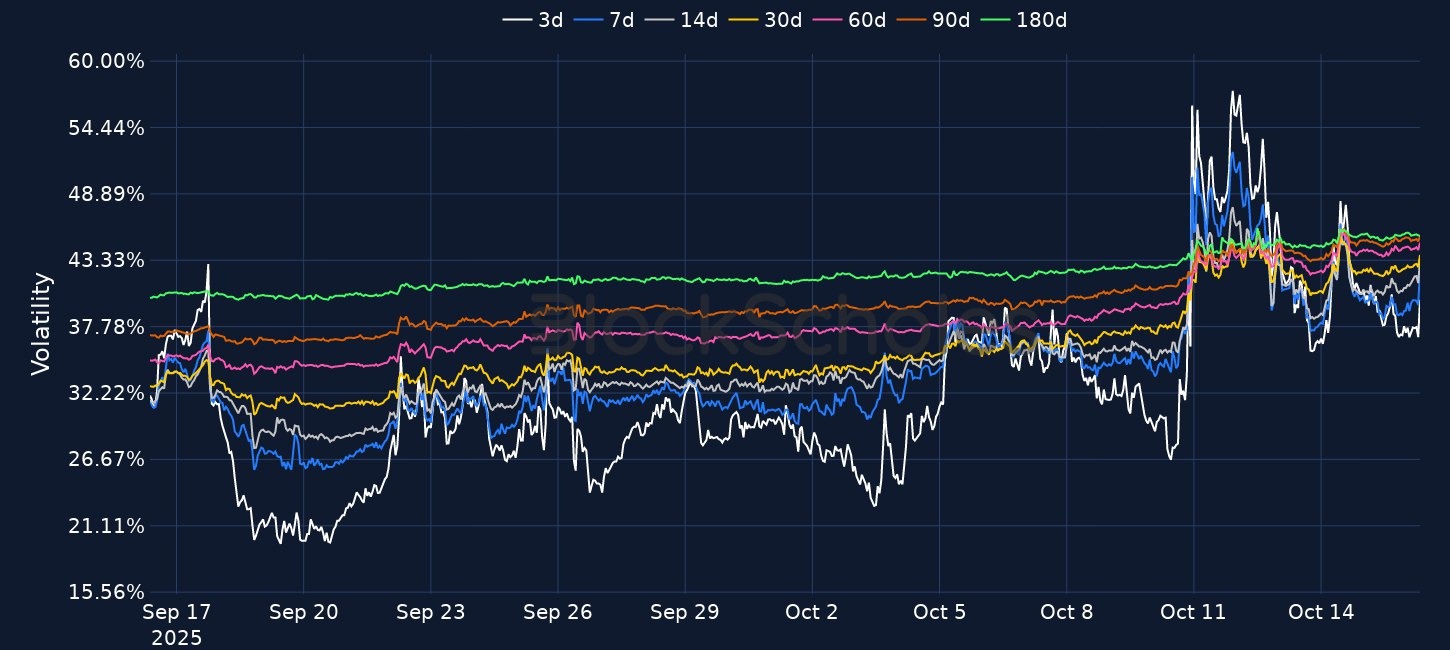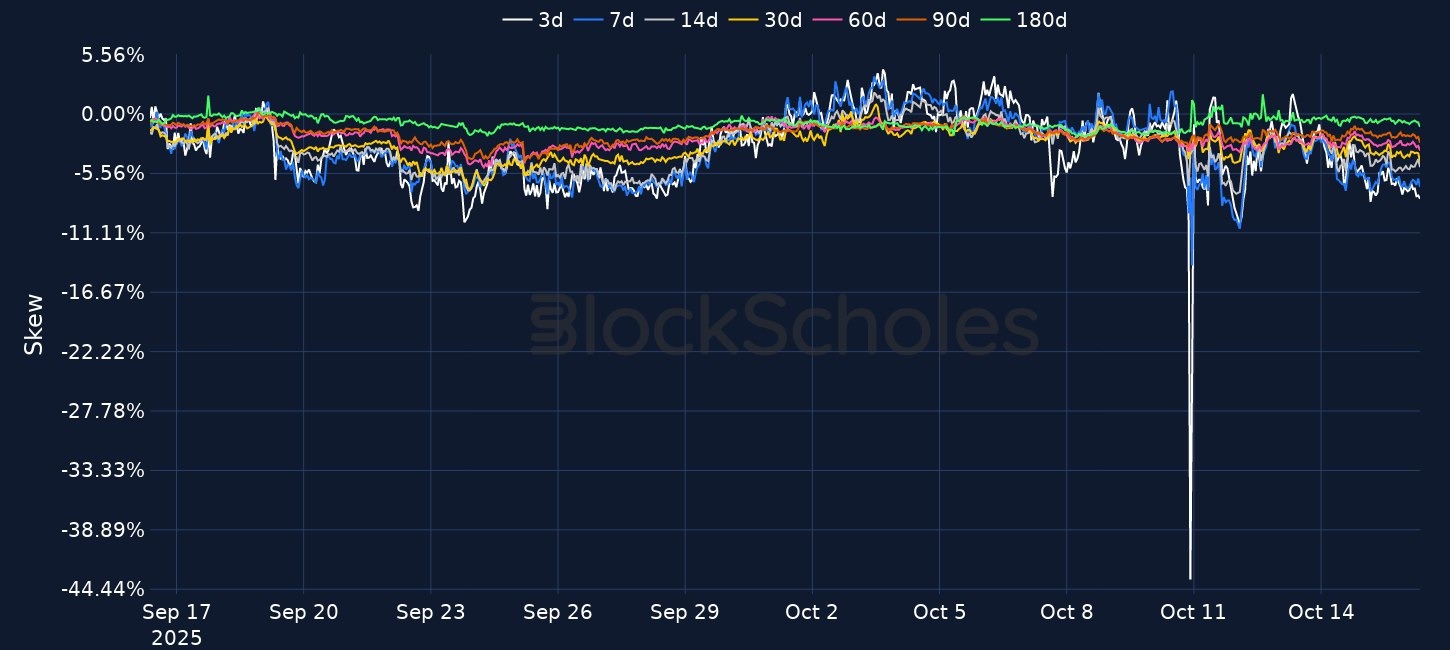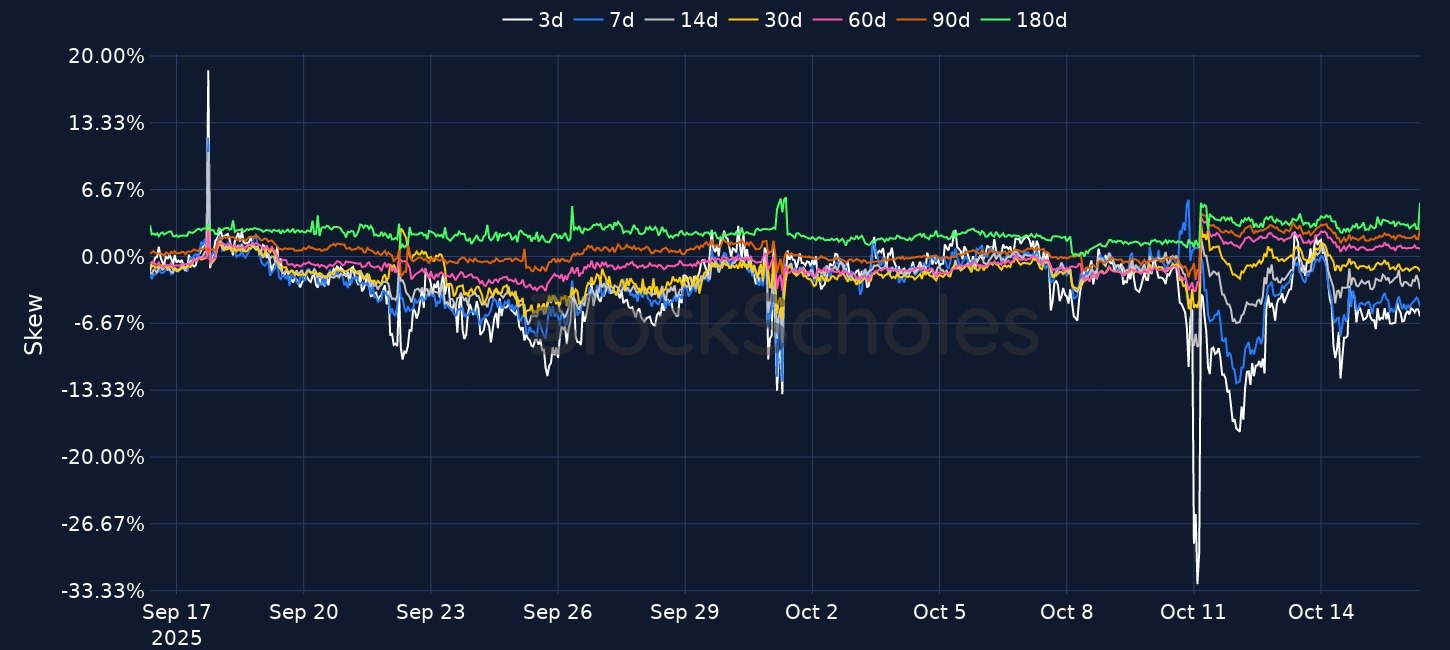Crypto Volatility Persists Amid Tariffs
Crypto markets remain volatile following record liquidations, with BTC hovering around $110K and ETH stabilizing near $4,000. Spot ETFs for both assets have seen continued outflows, adding to bearish sentiment. Options markets show heightened implied volatility — 40% for BTC and 70% for ETH — and persistent bearish put-call skews. On the macro front, U.S. equities were choppy but ended slightly higher amid renewed tariff tensions with China. Gold surged past $4,200 per ounce as investors sought safety. Meanwhile, institutional activity remained strong, with developments including BitMine’s massive ETH accumulation, OKX’s expanded custody partnership with Standard Chartered, and Kraken’s acquisition of a U.S.-regulated derivatives exchange.

Find out our latest reports, listed below:
Market Snapshot: Overnight Moves:
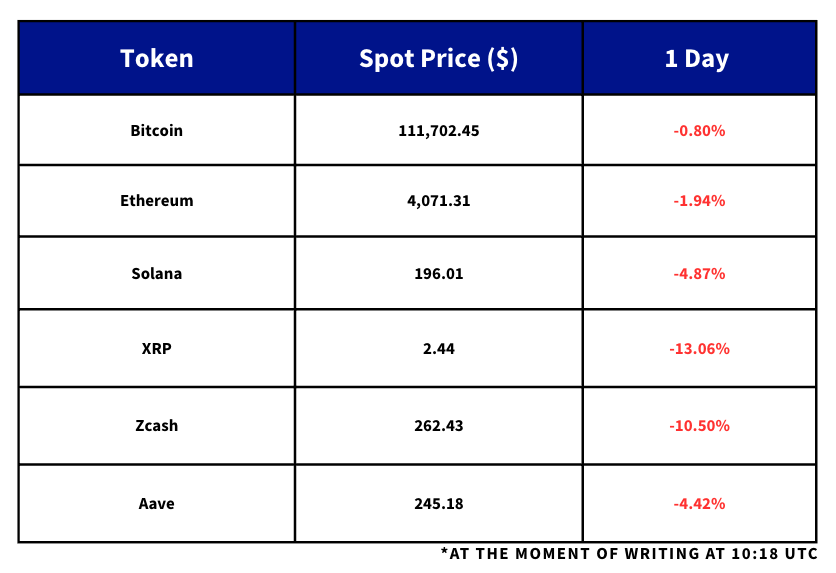
Daily Updates:
- Volatility remains elevated in crypto assets amidst macro stress and in the aftermath of the largest liquidation in crypto history. BTC slowly dropped lower throughout yesterday, falling from $113K to a low of $110K. Since hitting that level, it has mainly traded rangebound.
- A similar story can also be seen in ETH — after falling from $4,200, it is currently anchored around the $4000 mark.
- We see that both assets spot ETF markets are seeing modest outflows in the aftermath of the Friday crash. Spot Bitcoin ETFs have seen a net negative cumulative flow since Friday (-$322.2M), while Ethereum-based ETFs have also seen a net outflow of -$361.9M over the same period – this suggests that sell pressure from ETF investors may also be weighing down on price action.
- The heightened volatility is equally seen in options markets. One-week BTC contracts continue to trade with an ATM implied volatility of 40%, and similar dated contracts for Ether trade at a higher 70%. During the weekend crash, 7-day BTC vol broke out to its highest levels since April — a selloff that was also tariff induced.
- Put-call skew remains firmly bearish for both assets, though we currently see a stronger skew towards puts in BTC than we see in ETH. Additionally, the negative skew for BTC options is a constant phenomenon across the term structure, while longer dated optionality for Ether remains bullishly tilted.
- Over in Wall Street, US equities underwent a similar bout of volatility. After initially opening higher and rallying as much as 1.2%, the S&P 500 then began to dip down, before rallying once more. Those whipsaw moves saw the index ultimately end the day 0.4% higher.
- On the tariff front, Treasury Secretary Scott Bessent touted the possibility of an extension to the tariff pause announced by the Trump administration in August. Back then, Trump delayed the high tariff rate on Chinese goods for 90 days. Had that not been announced, tariffs on Chinese goods would have risen to 145% and Chinese tariffs on US goods would have been 125%. The August agreement saw both parties pause those higher rates and agree to a reduced tariff rate of 30% and 10%, respectively.
- During a press conference yesterday, Bessent said an extension of the pause is possible should China pause its plan for stricter export controls on rare-earth materials: “Is it possible that we could go to a longer roll in return? Perhaps. But all that’s going to be negotiated in the coming weeks”.
- Relative to Bessent’s more conciliatory response, President Trump had a different reaction when asked by a reporter, after the close of US equity markets, whether the US and China were at risk of a sustained trade war. Trump responded to the question saying “Well, you’re in one now … We have a 100% tariff. If we didn’t have tariffs, we would be exposed as being a nothing”.
- That heightened trade-war anticipation once more helped gold rise to another record high above $4,200 per ounce. Just this week alone, gold bullion is up 5%, and the buying demand has not just been limited to gold either.
- Governor Stephen Miran said that the recent trade tensions between the US and China have introduced a “new tail risk” for growth in the US economy, making it more imperative that the Fed cut rates.
- Speaking at an event yesterday, Miran claimed “There’s now more downside risks than there was a week ago, and I think it’s incumbent upon us as policymakers to recognize that should get reflected in policy”.
- CMB International, a unit of China Merchants Bank, has expanded the CMB International USD Money Market Fund (tokenised as “CMBMINT”) money market fund on the BNB Chain. It has already deployed on-chain across multiple blockchains including Solana, Ethereum, Arbitrum, and Plume.
- The fund is a real-world asset vehicle linked to high-quality short-term debt instruments such as U.S. dollar deposits, treasury bills, commercial paper and some non-USD short-term deposits.
- BitMine Immersion Technologies has expanded its Ethereum holdings by 104,336 ETH, valued at approximately $417M, according to on-chain data analyzed by Lookonchain. The transactions were distributed across three new wallet addresses via Kraken and BitGo.
- The purchase brings BitMine’s total Ethereum treasury to roughly 3.03M ETH, worth an estimated $12.2B as of October 13. This positions the firm as the largest Ethereum-holding company and the second-largest overall crypto treasury, trailing only MicroStrategy, led by Michael Saylor.
- Ethereum treasury firm ETHZilla Corporation (NASDAQ: ETHZ) has announced a 1-for-10 reverse stock split, effective on October 20, aimed at reducing the number of outstanding shares and elevating the company’s stock price above $10. The initiative is designed to make ETHZ more attractive to institutional investors and mutual funds that maintain minimum stock price requirements.
- According to ETHZilla’s statement, the reverse split is part of a broader effort to expand engagement with institutional capital and improve collateral and margin efficiency for large financial participants.
- Crypto exchange OKX has expanded its custody partnership with Standard Chartered into the European Economic Area (EEA), giving institutional clients the ability to trade on OKX while keeping their digital assets under the bank’s custody.
- The arrangement, first launched in the UAE earlier this year, establishes a clear separation between trading and custody. The model helps institutions reduce counterparty risk by allowing them to hold assets with Standard Chartered.
- According to Erald Ghoos, CEO of OKX Europe, the initiative combines bank-grade asset protection with direct market access, offering institutions greater security and liquidity within a regulated framework. He added that OKX’s MiCA license ensures the regulatory certainty needed for institutional participation and confident capital deployment.
- Kraken has acquired Small Exchange, a CFTC-regulated derivatives platform owned by IG Group, in a $100M deal. This acquisition gives Kraken a DCM license to launch and operate onshore exchange-listed crypto derivatives within the U.S.
- Ripple has partnered with South Africa’s Absa Bank to integrate its institutional-grade digital asset custody technology. The partnership enables Absa to provide secure, scalable storage for tokenised assets including cryptocurrencies to its clients.
This Week’s Calendar:
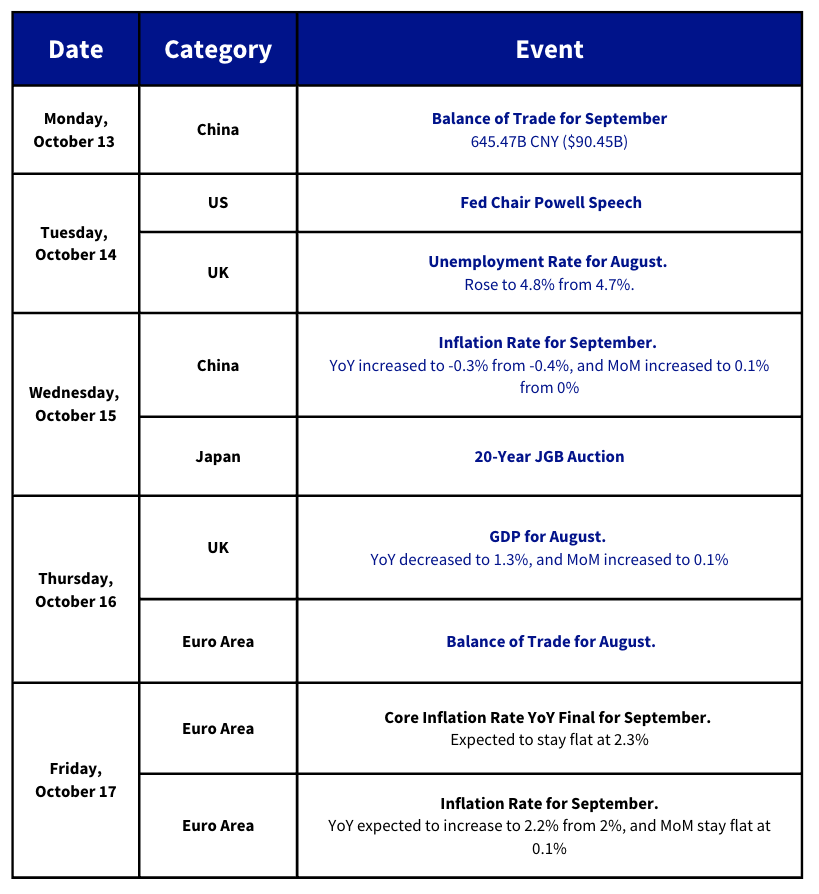
Charts of the Day:
